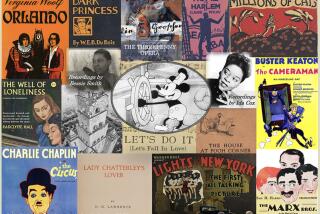Dancing in the Dark
- Share via
Lewis Segal’s Perspective on trading “bootleg” ballet videos brings up crucial questions about copyright law (“Psst--Wanna See a Ballet Video?,” Feb. 10), the most important being making art available to the most people while not violating the copyright owners’ ability to profit from their work.
Since home video became a viable medium in the late ‘70s, hundreds of bootleg videos have hit the streets. Many violated clearly defined copyrights--and deserved to be stopped. However, many also brought to eager fans films/TV shows/concerts/performances that were thought “lost” or “unavailable.”
Over the years, studios have gone after independent video distributors who brought these treasures to the public. In some cases, the studio or copyright holder eventually put out authorized versions. But in the vast majority of cases, these productions simply remain in the vaults, never to be seen again. Who truly benefits?
People who search out these rarities are the same people who will shell out $9 to see a film in theaters, pay $20 for the VHS tape, and then pay $20 again for the DVD.
I feel that as long as a good-faith agreement exists that if a “legit” version is released the “bootleg” version will be pulled from distribution, the public wins.
JOE STEMME
Culver City
*
Dance companies are perennially and legendarily short of funds, and no one expects a dance company director to be an expert on copyright. However, it must be extremely difficult for students of dance to truly understand or master their medium when so much of its history is inaccessible.
Dance companies should make a priority of assembling film and video archives and agreeing on a mode of dissemination. Such a task, properly organized, would be a perfect project for company interns or volunteers. If the difficulties raised by performers’ rights concerns are truly so overwhelming, it might be necessary for companies to reconstruct and restage certain works. They should do so before the original recordings are lost. Dance need no longer be an ephemeral art.
ALEXANDRA Y. CALUEN
Beverly Hills
More to Read
The biggest entertainment stories
Get our big stories about Hollywood, film, television, music, arts, culture and more right in your inbox as soon as they publish.
You may occasionally receive promotional content from the Los Angeles Times.










